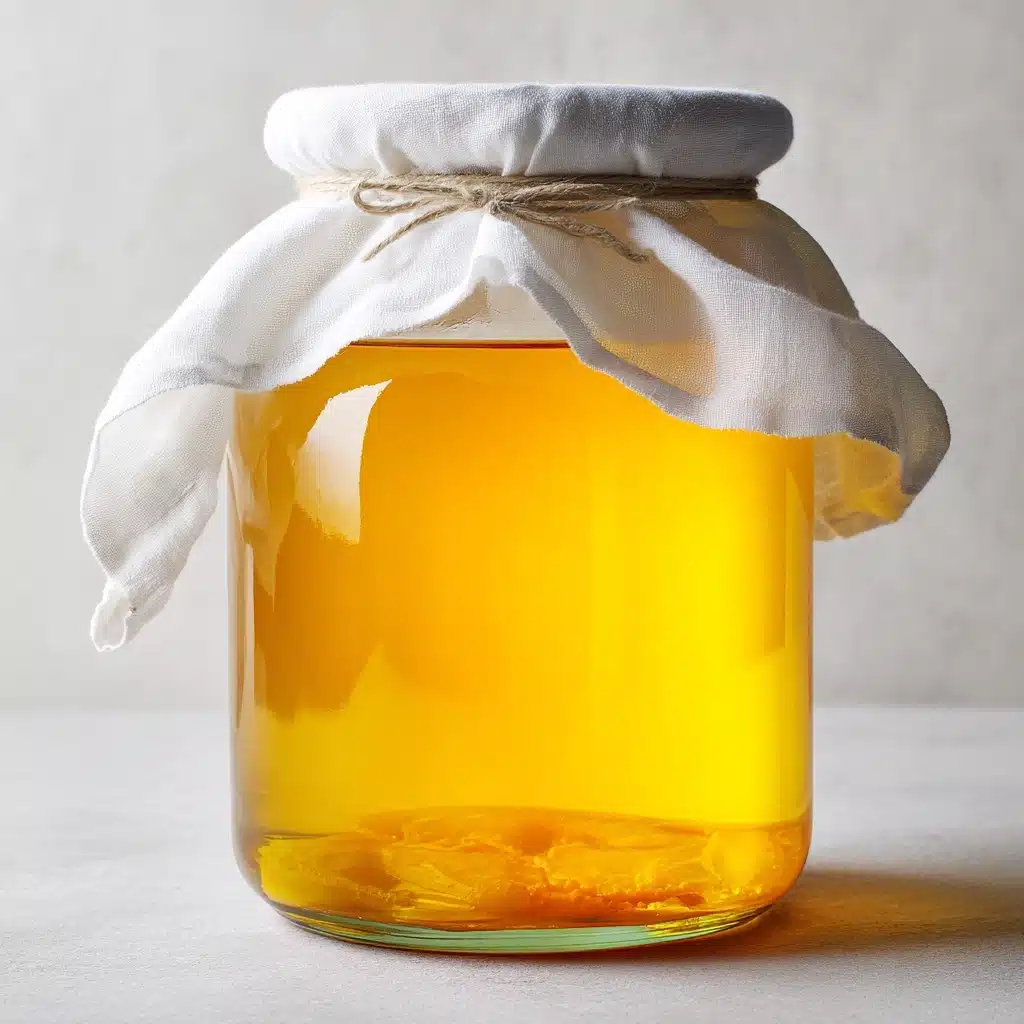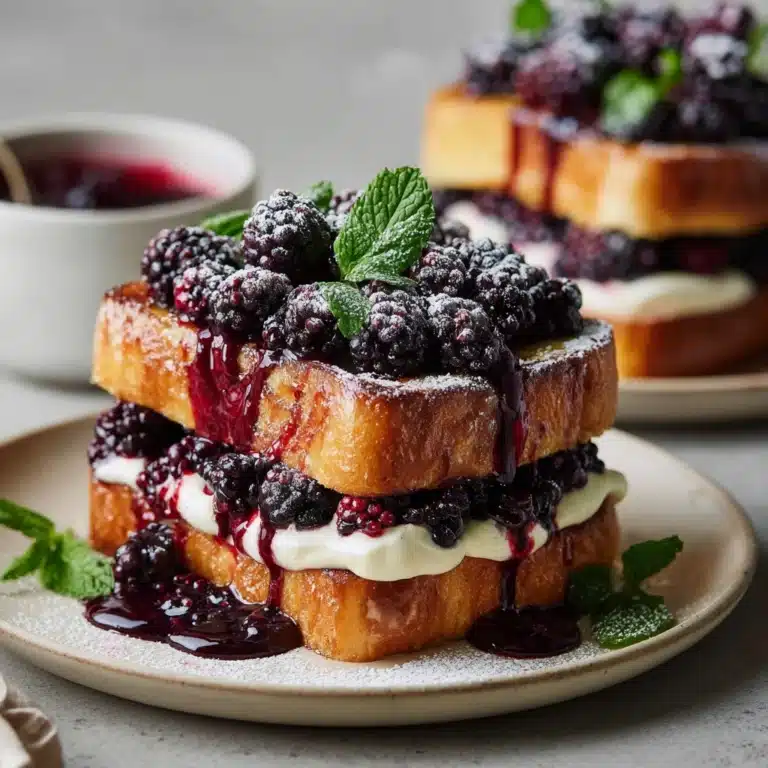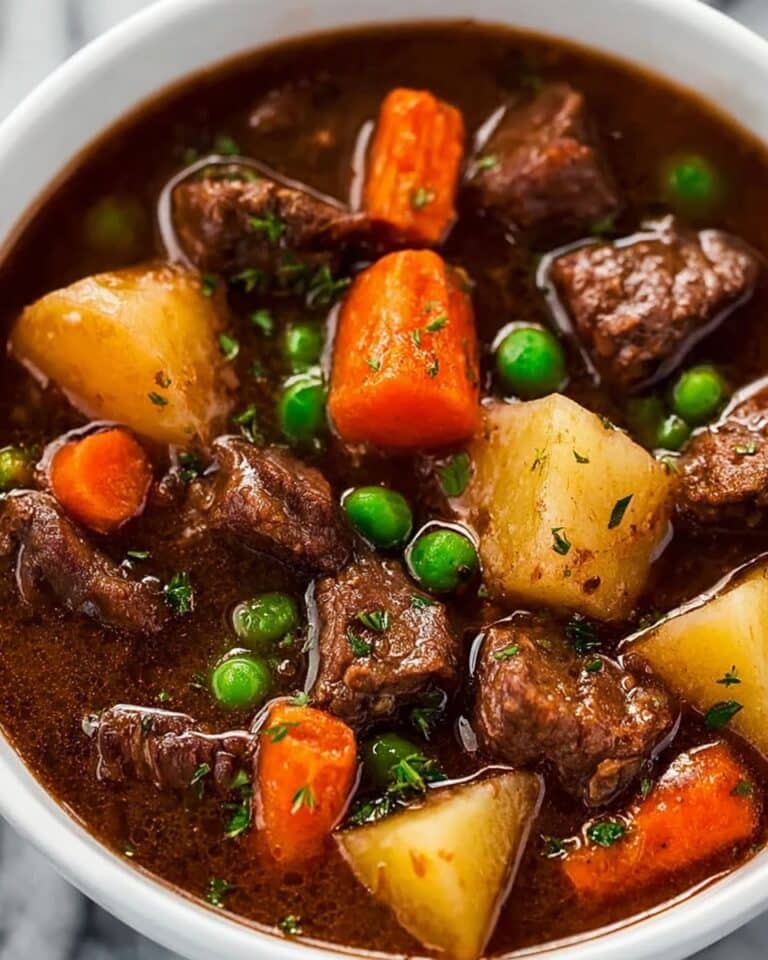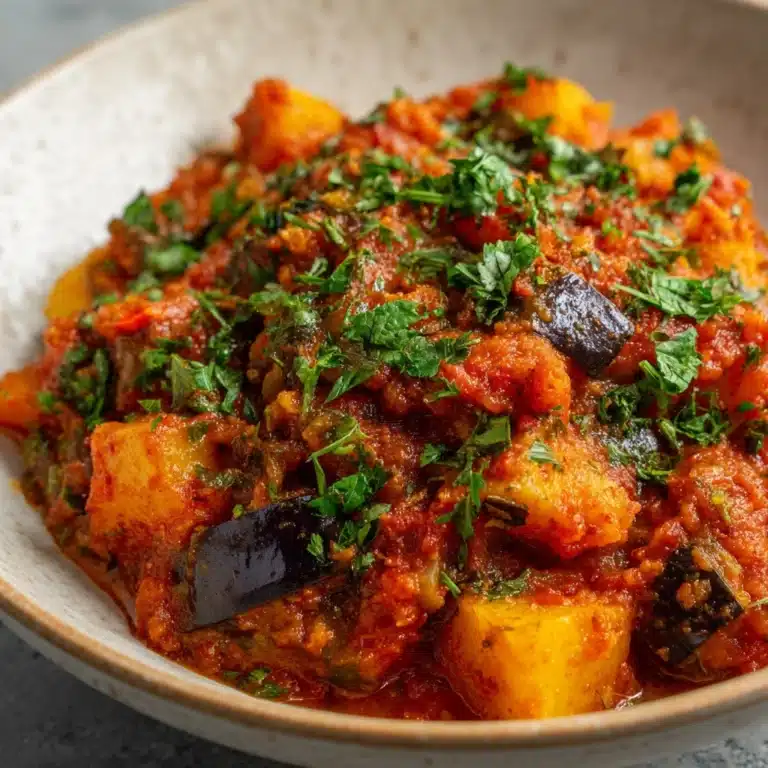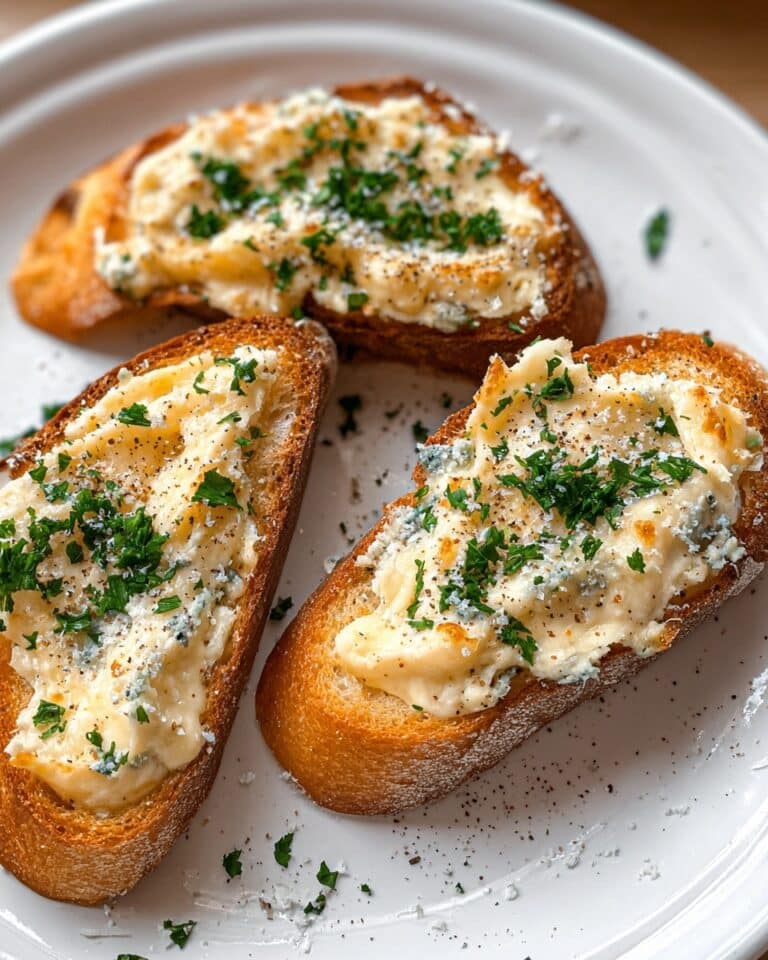If you’re looking for a refreshing, slightly floral probiotic drink with a naturally sweet flavor, you’ll fall head-over-heels for Jun Tea (Green Tea Kombucha). This beverage balances the delicate notes of green tea with raw honey, resulting in a crisp, uplifting sip that’s as beautiful to serve as it is simple to make. Infusing your kitchen with a gentle tang and fizz, this ancient ferment feels like a secret wellness ritual you’ll want to share with everyone you know.
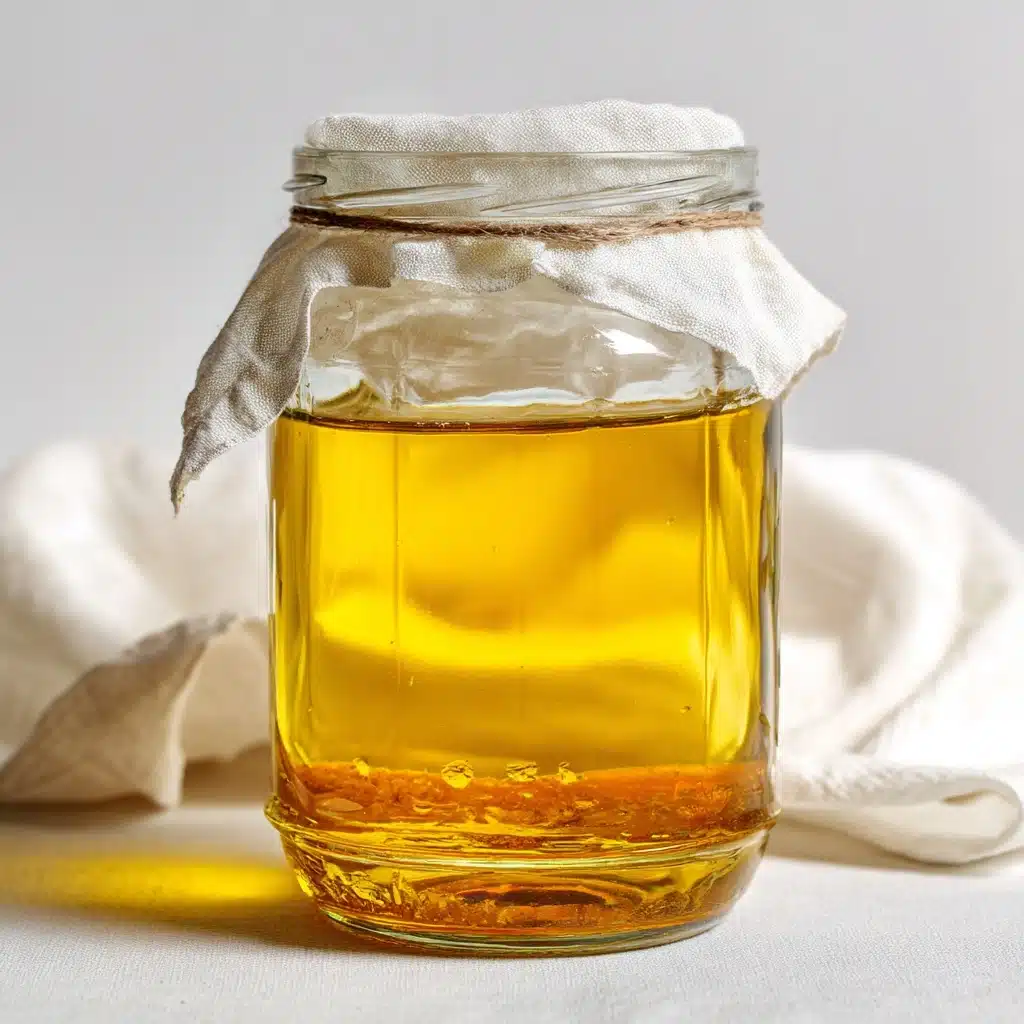
Ingredients You’ll Need
-
Ingredients:
- 4 cups filtered water
- 1 tablespoon loose-leaf green tea or 2 green tea bags
- ¼ cup raw honey
- 1 cup unflavored Jun starter tea (from a previous batch or store-bought)
- 1 Jun SCOBY (symbiotic culture of bacteria and yeast)
How to Make Jun Tea (Green Tea Kombucha)
Step 1: Brew the Green Tea
Bring 4 cups of filtered water to a gentle boil in your favorite saucepan, then remove it promptly from the heat. Add your loose-leaf green tea (or tea bags) and let it steep for 3–5 minutes, keeping an eye on the color and aroma. Strain out the leaves or remove the bags, so the tea doesn’t get bitter.
Step 2: Sweeten with Honey
With the tea still nice and warm, stir in the raw honey until it fully dissolves. This is where Jun Tea (Green Tea Kombucha) gets its one-of-a-kind delicate and floral sweetness. Let the mixture cool completely to room temperature—this is vital so you don’t harm your SCOBY in the next step.
Step 3: Prepare for Fermentation
Once your honey-sweetened green tea is totally cool, pour it into a squeaky-clean glass jar. Gently add your Jun SCOBY and pour in the cup of unflavored starter tea. These living cultures are what will work their magic, transforming your sweet tea into something spectacular.
Step 4: Cover and Ferment
Cover the jar with a breathable cloth or a coffee filter, and secure it with a rubber band to keep curious critters out. Find a dark spot in your kitchen, away from direct sunlight and drafts, where your Jun Tea (Green Tea Kombucha) can ferment at room temperature (ideally 65–75°F) for 5 to 7 days. After day 5, start tasting—you’re looking for a clean, not-too-sweet, and slightly tangy profile. When it’s just right, your creation is ready!
Step 5: Bottle and Carbonate
Carefully remove the SCOBY (save it with a cup of tea for your next batch!). Pour the rest of your Jun tea into airtight bottles, leaving some headspace, and seal tightly. If you crave gentle bubbles, leave the sealed bottles at room temperature for 1–3 days for a natural fizz to develop, then refrigerate. Serve chilled and enjoy this gorgeous home-brewed Jun Tea (Green Tea Kombucha)!
How to Serve Jun Tea (Green Tea Kombucha)
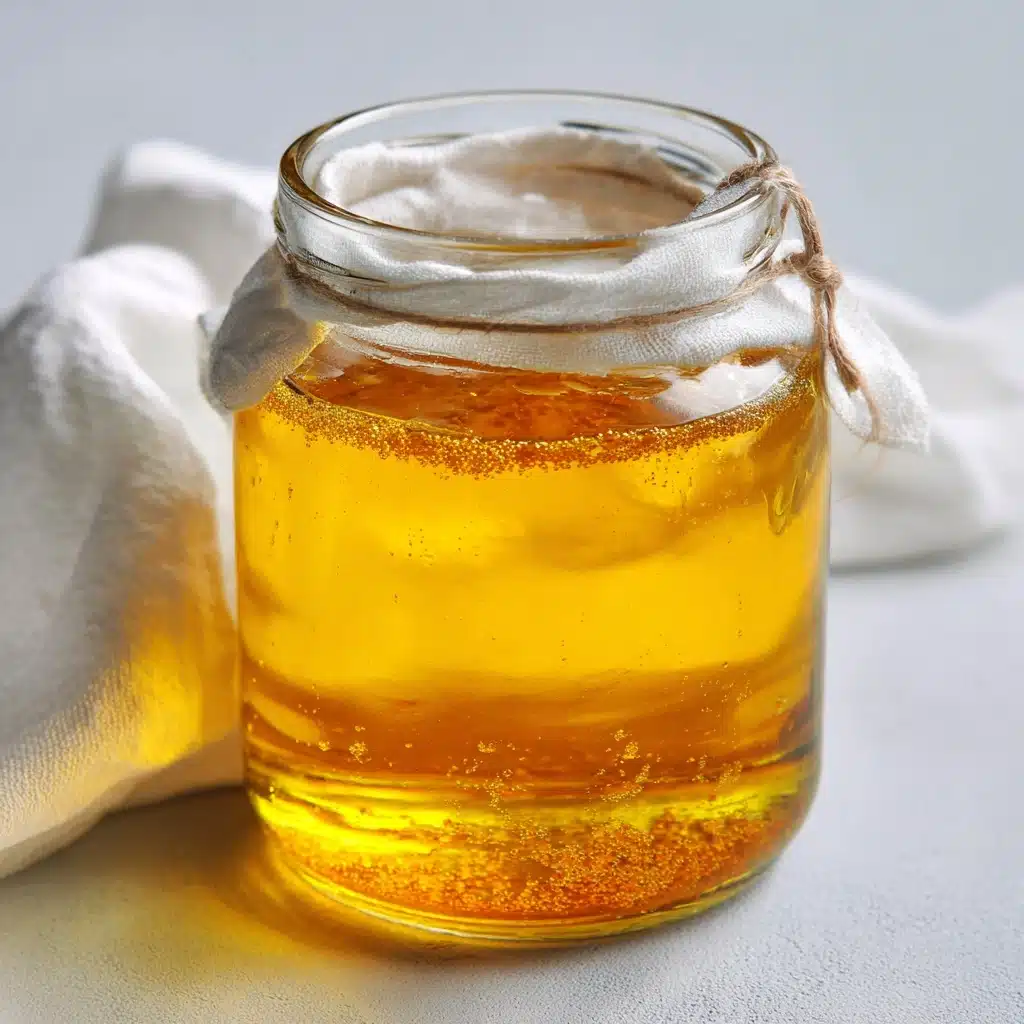
Garnishes
Dress up your glass with a wheel of lemon, a few pomegranate seeds, or a sprig of fresh mint. The ethereal color of Jun Tea (Green Tea Kombucha) makes it a stunning canvas for edible flowers—think violets or lavender.
Side Dishes
This drink plays well alongside a platter of sharp cheeses, lightly salted nuts, or a crisp salad with citrus segments. Its lively tang and honeyed complexity also pair beautifully with sushi or fresh spring rolls, adding brightness to every bite.
Creative Ways to Present
Pour Jun Tea (Green Tea Kombucha) into delicate tea cups for a refined afternoon treat, or serve over ice in tall glasses with fruit infusions for a summer gathering. For a special brunch, try using it as a bubbly, alcohol-free mixer with muddled berries.
Make Ahead and Storage
Storing Leftovers
Keep any remaining Jun Tea (Green Tea Kombucha) in the fridge in airtight bottles. It’s best enjoyed within 7–10 days—just expect the flavor and fizz to develop as it sits. As always, use your senses and check for off smells before serving.
Freezing
Freezing isn’t recommended, since it can mute the nuanced flavors and disrupt the live cultures that make Jun Tea (Green Tea Kombucha) so wonderful. If you must freeze, do so only with finished tea—not the active SCOBY or starter.
Reheating
This tea is best served chilled or at room temperature. Reheating can harm the beneficial probiotics and kill the bubbly texture, so skip warming and enjoy it cold for maximum flavor and health benefits.
FAQs
Can I use other sweeteners instead of raw honey?
No, the Jun SCOBY thrives on raw honey, and using other sweeteners like sugar or agave can disrupt the fermentation process and harm your culture. If you’re set on experimenting, look for traditional kombucha recipes instead.
How do I know if my Jun Tea (Green Tea Kombucha) is done fermenting?
Start tasting after five days of fermentation; when you hit that ideal balance of sweet and tangy, your Jun Tea is ready to bottle. Warmer kitchens will ferment more quickly than cooler ones, so trust your palate rather than the calendar.
Can I flavor my Jun tea after fermentation?
Absolutely! Add ginger, berries, citrus peel, or herbs for a second fermentation. Just strain the flavorings out before the final chill. This step invites infinite creativity and fun, making every batch a bit different.
My Jun SCOBY looks a little odd—should I be worried?
It’s perfectly normal for the SCOBY to change shape, float, sink, or sprout new layers. However, toss the batch if you see dark green, black, or fuzzy mold. A healthy SCOBY smells pleasantly vinegary and sweet.
What’s the difference between Jun Tea and regular kombucha?
Jun Tea (Green Tea Kombucha) is traditionally brewed with green tea and raw honey, while regular kombucha uses black tea and cane sugar. Jun ferments faster, offers a softer, less acidic flavor, and is a tasty option for folks who prefer a lighter probiotic drink.
Final Thoughts
If you’ve never tried making your own Jun Tea (Green Tea Kombucha), there’s never been a better time to dive in. Each fizzy, delicate glass is a celebration of patience and flavor, and I promise you’ll be hooked after your very first batch—don’t be surprised when your friends start asking for refills!
Print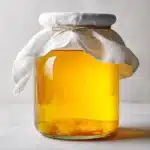
Jun Tea (Green Tea Kombucha) Recipe
- Total Time: 15 minutes (plus 5–7 days fermentation)
- Yield: 4 cups 1x
- Diet: Vegan
Description
Learn how to make Jun Tea, a delightful variation of kombucha made with green tea and honey. This probiotic drink is easy to ferment at home and offers a unique flavor profile.
Ingredients
Ingredients:
- 4 cups filtered water
- 1 tablespoon loose-leaf green tea or 2 green tea bags
- ¼ cup raw honey
- 1 cup unflavored Jun starter tea (from a previous batch or store-bought)
- 1 Jun SCOBY (symbiotic culture of bacteria and yeast)
Instructions
- Boil Water and Steep Tea: Bring filtered water to a gentle boil, add green tea, steep for 3–5 minutes, then strain or remove tea bags.
- Add Honey and Cool: Stir in honey until dissolved, let sweet tea cool to room temperature.
- Prepare the Fermentation Jar: Pour cooled tea into a glass jar, add Jun SCOBY and starter tea.
- Ferment: Cover jar with breathable cloth, place in a dark spot (65–75°F) for 5–7 days.
- Check and Bottle: Taste after day 5, remove SCOBY, reserve 1 cup tea, bottle the rest, and refrigerate.
- Carbonate (Optional): Leave sealed bottles at room temperature for 1–3 days before chilling.
Notes
- Jun tea ferments faster with green tea and honey.
- Avoid using black tea or sugar to prevent SCOBY disruption.
- Flavor the tea during bottling for a second fermentation with ginger, fruit, or herbs.
- Prep Time: 10 minutes
- Cook Time: 5 minutes
- Category: Beverage
- Method: Fermenting
- Cuisine: Asian-Inspired
Nutrition
- Serving Size: 8 oz (1 cup)
- Calories: 35
- Sugar: 6g
- Sodium: 5mg
- Fat: 0g
- Saturated Fat: 0g
- Unsaturated Fat: 0g
- Trans Fat: 0g
- Carbohydrates: 8g
- Fiber: 0g
- Protein: 0g
- Cholesterol: 0mg
